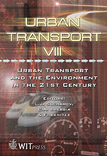Contrasting Structures Of Metropolitan Mobility In Spain
Price
Free (open access)
Transaction
Volume
60
Pages
10
Published
2002
Size
478 kb
Paper DOI
10.2495/UT020061
Copyright
WIT Press
Author(s)
J. Roca Cladera, M.C. Burns, M. Moix Bergadà & J.M. Silvestro
Abstract
This paper draws upon results emanating from an INTERREG IIC European Union project, examining the territorial and functional characteristics of the Spanish metropolitan urban regions, in the context of the nature of the overall urban system of South-western Europe. Part of the study included research concerning the structure of mobility and its territorial paradigm in the Spanish metropolitan urban regions. The metropolitan urban regions under investigation were Barcelona, Madrid, Malaga, Seville, Valencia y Bilbao. Data of mobility for employment related purposes alone, between municipalities, was used, owing to the absence of homogeneous mobility data sources for other purposes. The results indicate two clearly contrasting patterns of spatial organisation within the metropolitan urban regions. In the cases of Madrid, Valencia, Seville and Malaga, one can observe clearly monocentric models of development and mobility. Here the vast majority of the flows between place of residence and place of work gravitate to the centre of the metropolitan urban region and which are characterised by extensive radial distances. However in the metropolitan urban regions of Barcelona and to a lesser extent Bilbao, demonstrate more decentralised models of mobility, with the presence of sub-centres and a greater internal complexity, with shorter distances travelled and, as a consequence, areas which are potentially more sustainable.
Keywords





